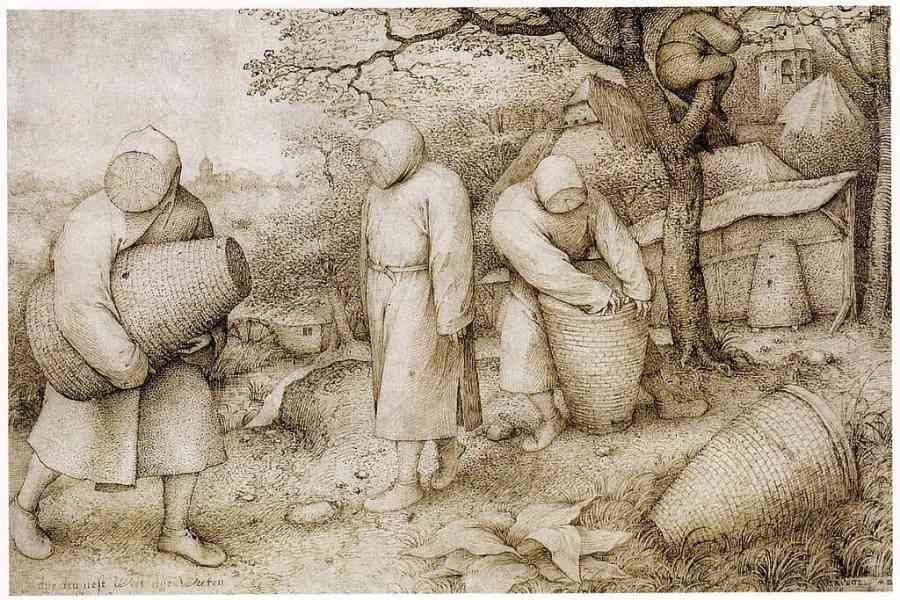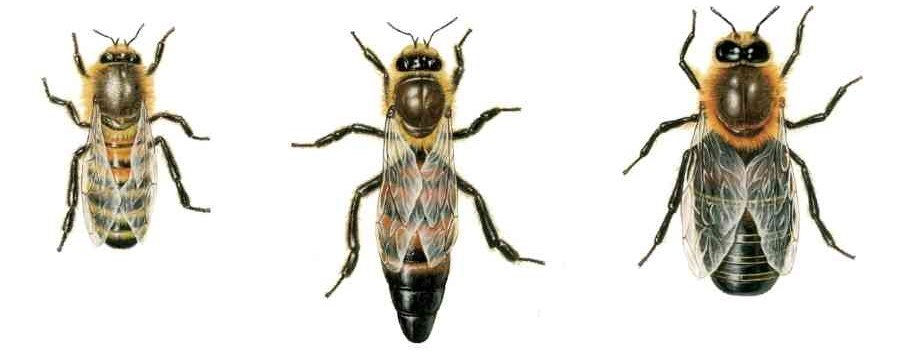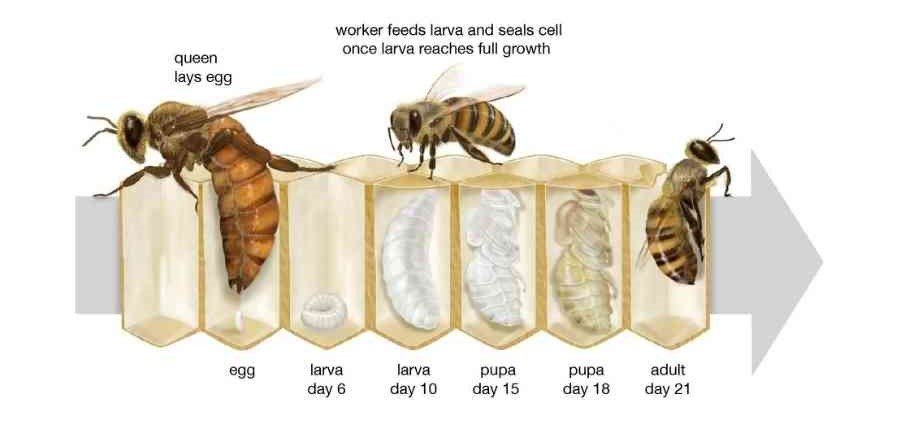Apiculture is the practice of beekeeping and it’s a vital part of agriculture. Learn more about this ancient practice, how it plays into modern agriculture, and how it benefits us today.
What is Apiculture?
Apiculture is the practice of keeping bees and manufacturing honey and beeswax. Or, The raising and care of bees for commercial or agricultural purposes.
The history of apiculture/ beekeeping
Honey-producing beekeeping dates back 10,000 years. Georgia is “Beekeeping’s Cradle” Georgia has the oldest honey. The 5,500-year-old treasure was discovered in 2003 near Borjomi, Georgia. Ceramic jars held linden and floral honey. Egyptian art from 4,500 years ago depicts bee domestication. Ancient China, Greece, and Maya had beekeeping.

| Time | Events |
| 10,000 years ago | Humans began to try to keep wild bee colonies alive in artificial hives i.e. wooden boxes called skeps. |
| 9,000 years | North Africa was the birthplace of beekeeping in pottery vessels. |
| About 7000 BCE | Beeswax traces have been discovered in potsherds all over the Middle East. |
| 4,500 years ago | Egyptian art depicts bee domestication. |
| Honey was preserved in jars and some were found in Tutankhamun’s tomb. | |
| Not before the 18th century | European knowledge of bee colonies and biology led to the development of the movable comb hive, which allowed honey to be harvested without harming the colony. |
| Before 2422 BCE | The Fifth Dynasty depicts workmen blowing smoke into hives as they remove honeycombs on the walls of the Nyuserre Ini sun temple. |
| 650 BCE | On Pabasa’s tomb from the 26th Dynasty, there exist writings that describe how honey is made. |
| The Jordan Valley, Israel’s Rehov archaeological site, which dates to the Bronze and Iron Ages, is where the earliest discoveries specifically pertaining to beekeeping have been made. | |
| About 900 BCE | Amihai Mazar, an archaeologist, found thirty undamaged hives composed of straw and unbaked clay in the city’s remains. According to Mazar, the evidence says that Israel had a sophisticated honey industry 3,000 years ago. |
Wax, propolis, and crop pollination are the main objectives of modern beekeeping. Agricultural businesses run large beekeeping operations, while many people keep bees as a hobby. Technology advancements have made beekeeping more approachable, and urban beekeeping is an increasing trend. Since there are fewer chemicals and more species diversity in cities, “city bees” are healthier than “country bees.”
Species of honey bee
- Indian bee: Apis cerana indica.
- Rock bee: Apis dorsata.
- European bee: Apis mellifera.
- Little bee: Apis florea.
- Dammer bee or stingless bee: Melipona iridipennis.
Honey bee castes
The insect which is lived together is called a social insect. Honey bee lives in a colony. A colony must maintain many rules and regulations based on the division of labor. In a colony, they are divided into several grades. These groups are nothing but called caste. In the honey bee, there are four castes.
- Queen
- Drone
- Worker
- Soldier
| Worker | Queen | Drone |
| 5,000-50,000 per colony, sterile female, developed from fertilized eggs, have sting used to defense, small size, 1115 mm in length, longevity 36 months. All are a worker. | Only one queen per colony, mother of the colony, sexual female developed from fertilized eggs have sting used to kill the rival queen. Large-sized, 1520 mm in length, can lay eggs 10003000 per day. It can preserve more than two crore sperm. Mate once in life, longevity 35 years. No works, only reproduce. | Less in number per colony, bisexual male, developed from unfertilized eggs, no sting, medium-large sized, 1317 mm in length. Mate only once and then died, longevity 24 months, No work only feeding, Fly in the air when bright light. |

The life cycle of a honey bee

| Caste | Egg | Larva | Pupa | Total | Adult longevity |
| Queen | 3 days | 5 days | 7-8 days | 15-16 days | 5 years |
| Drone | 3 days | 4-5 days | 11-12 days | 18-20 days | 2-4 months |
| Worker | 3 days | 5-7 days | 13-14 days | 21-24 days | 3-6 months |
Importance of Apiculture & Beekeeping
There are many agricultural-based countries in the world. We have many flowers in the field, on roads, and even in the jungle, full of nectar. If we make a little effort, we collect honey from these flowers to bring our economic solvency and develop our national wealth. However, through rearing honey bees, we can get two things-
- Honey.
- Wax.
Uses of honey
Surprisingly, honey has many uses and benefits, which are as follows-
Use as food:
- About 80 chemical constituents identified in honey have high food value.
- Honey play a significant role for children, and older people.
- honey is an excellent food for hard laborers and players.
- We can regain lost energy very quickly by using honey.
- Honey helps reduce constipation, bloating, and gas.
- Substituting raw honey for white sugar can help in weight management.
Use as medicine
- Consumption of raw honey can reduce the risk of developing diabetes and supports the effects of diabetes medication.
- It can help reduce cholesterol and decrease coronary artery disease risk.
- Raw honey makes the brain function optimally by strengthening the heart and improving blood circulation.
- Raw honey can help reduce seasonal allergies if sourced locally.
- The consumption of honey promotes beneficial antioxidant agents, stimulates antibodies, and combats harmful microbial activity.
- Honey can help improve urinary tract infections due to its antibacterial properties.
Use as cosmetics
- We can use it as an affordable face cleanser to fight acne and is gentle on sensitive/all skin types.
- A spoonful of raw honey mixed with olive oil and a squeeze of lemon works as a hydrating lotion.
- Raw honey can cleanse and restore the health of hair and scalp.
- The raw honey hair mask can help boost shine.
In agriculture:
- Honey bee plays a significant role in agriculture by pollination.
Solve the unemployment problem:
- Many people can solve their unemployment problem by involving themselves in apiculture.
Miscellaneous uses:
- Used in manufacturing different drinks.
- Prepare bacterial media.
- Poisonous bait.
Uses of wax
Wax is used for various purposes. Some are given below-
- Candle industry, where wax is the main ingredient.
- Pharmaceuticals, especially for making capsules.
- One of the best benefits of using beeswax on the skin is moisturizing and softening.
- Cosmetic industry; face cream, lipstick.
- Furniture industry.
- Used for Making electric insulators.
Verdict
Apiculture is the practice of beekeeping and the production of honey. Beekeepers use a variety of techniques to maintain their hives and ensure a healthy environment for their bees. By understanding the basic principles of apiculture, you can become a responsible beekeeper and produce high-quality honey.
